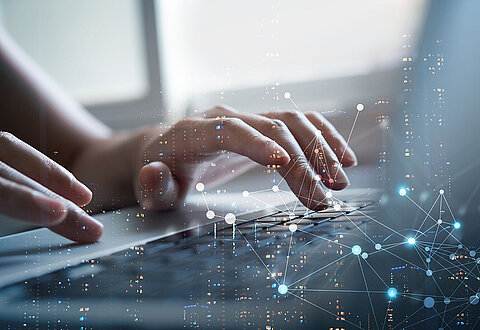With the amendment of the Drinking Water Ordinance, very strict requirements regarding PFAS (per- and polyfluorinated alkyl substances) must be met in future. As these compounds have been used for decades in numerous industrial, commercial and household products and are hardly biodegradable, they are ubiquitous in the environment. It can be assumed that many water suppliers will have to retrofit PFAS removal systems in the coming years. The planning and multi-year operation of a reverse osmosis and a grain activated carbon plant for PFAS removal was designed and supervised by TZW: DVGW-Technologiezentrum Wasser at Stadtwerke (Public utilities) Baden-Baden.
A reverse osmosis system was installed as part of the modernisation of Stadtwerke Baden-Baden's drinking water treatment system at the Sandweier waterworks and the entire treatment concept for PFAS elimination was modified due to groundwater contamination. After five years of large-scale operating experience, it can be seen that all PFAS are removed as expected by reverse osmosis. On the other hand, there are corresponding expenses for the operation of the plant, such as energy consumption and membrane replacement.
Local authorities ordered that the PFAS-containing retentate stream from the plant must be treated before being discharged into a river. For this purpose, a grain activated carbon filter system was also installed to treat the retentate. Activated carbon is used to adsorptively remove the more toxicologically relevant, longer-chain PFAS such as PFOA and PFHpA from the reverse osmosis retentate. However, the short-chain PFAS such as PFBA and PFPA cannot be controlled with activated carbon under typical waterworks conditions.
PFAS elimination requires a high level of operational costs, especially if the guideline values for both, drinking water and retentate from reverse osmosis, are tightened at the same time.
The text is an excerpt (translated from German) from an article that appeared in DVGW energie wasser praxis 09/2024. You can read the full text here (in German, pdf file).
In the PRAXIS: RELEVANT series, the TZW presents examples of successful projects that have been implemented together with water supply companies.

![[Translate to English:] Prüfstelle-Produktprüfung_Teststand Test centre and product testing](/fileadmin/_processed_/0/9/csm_TZW-Karlsruhe_Pruefung_Geraete-Teststand_377188946c.jpg)
























